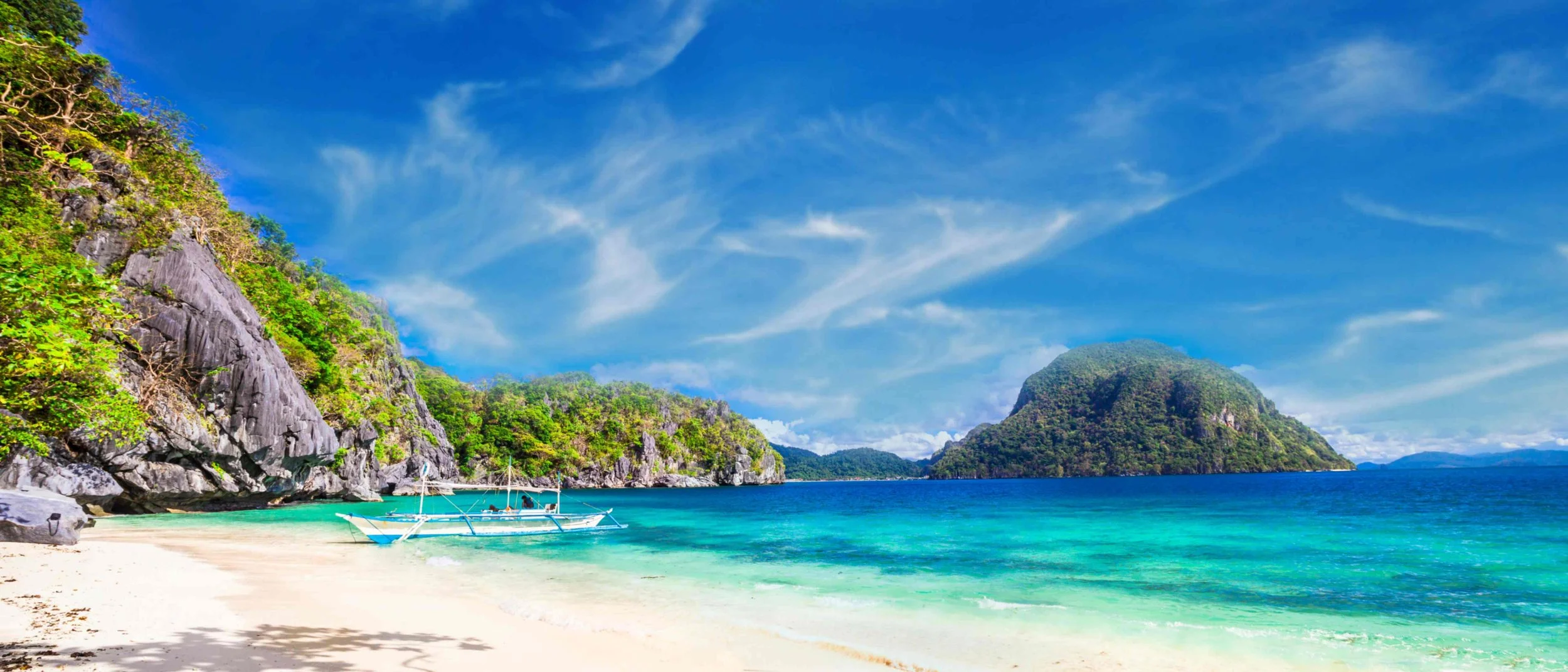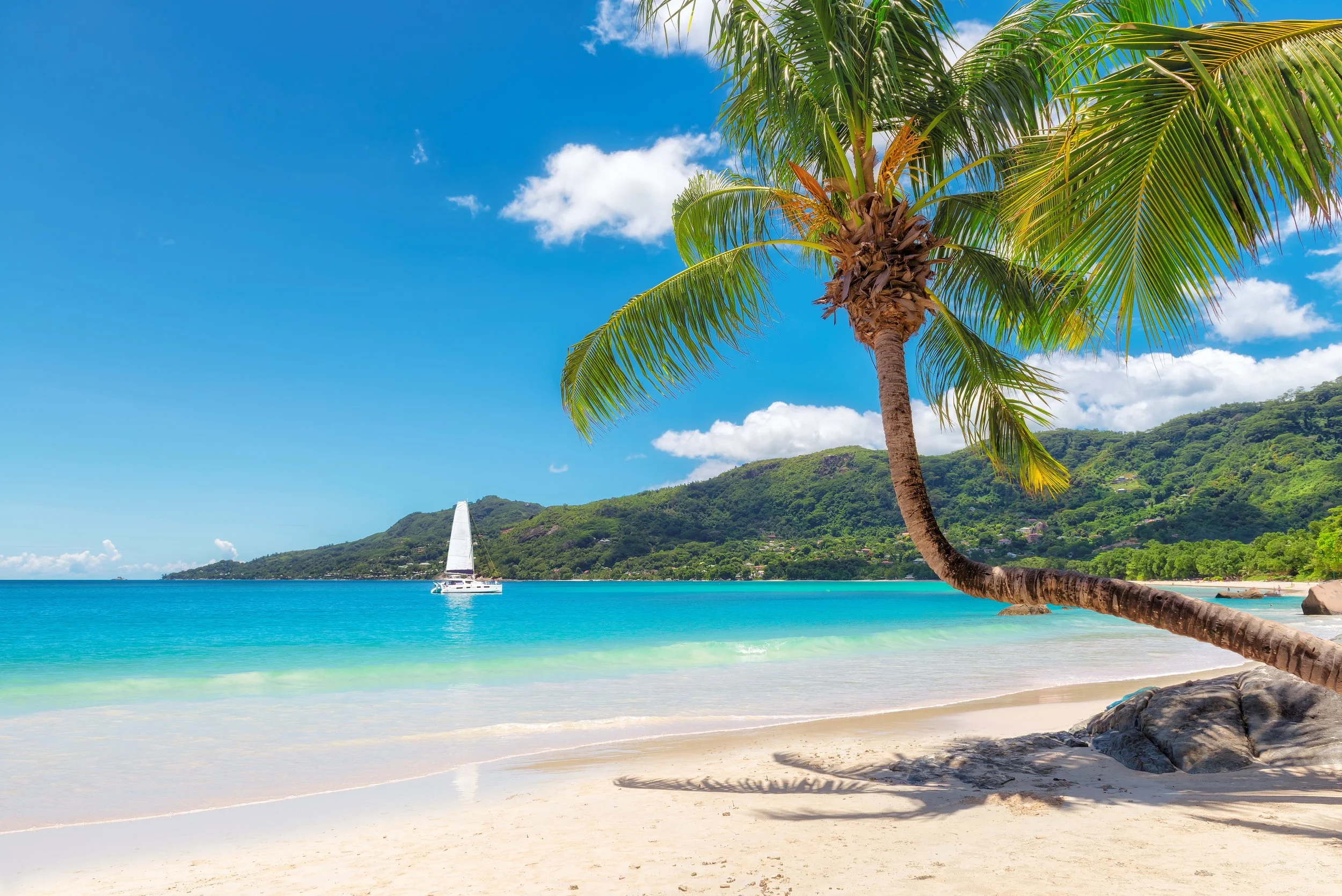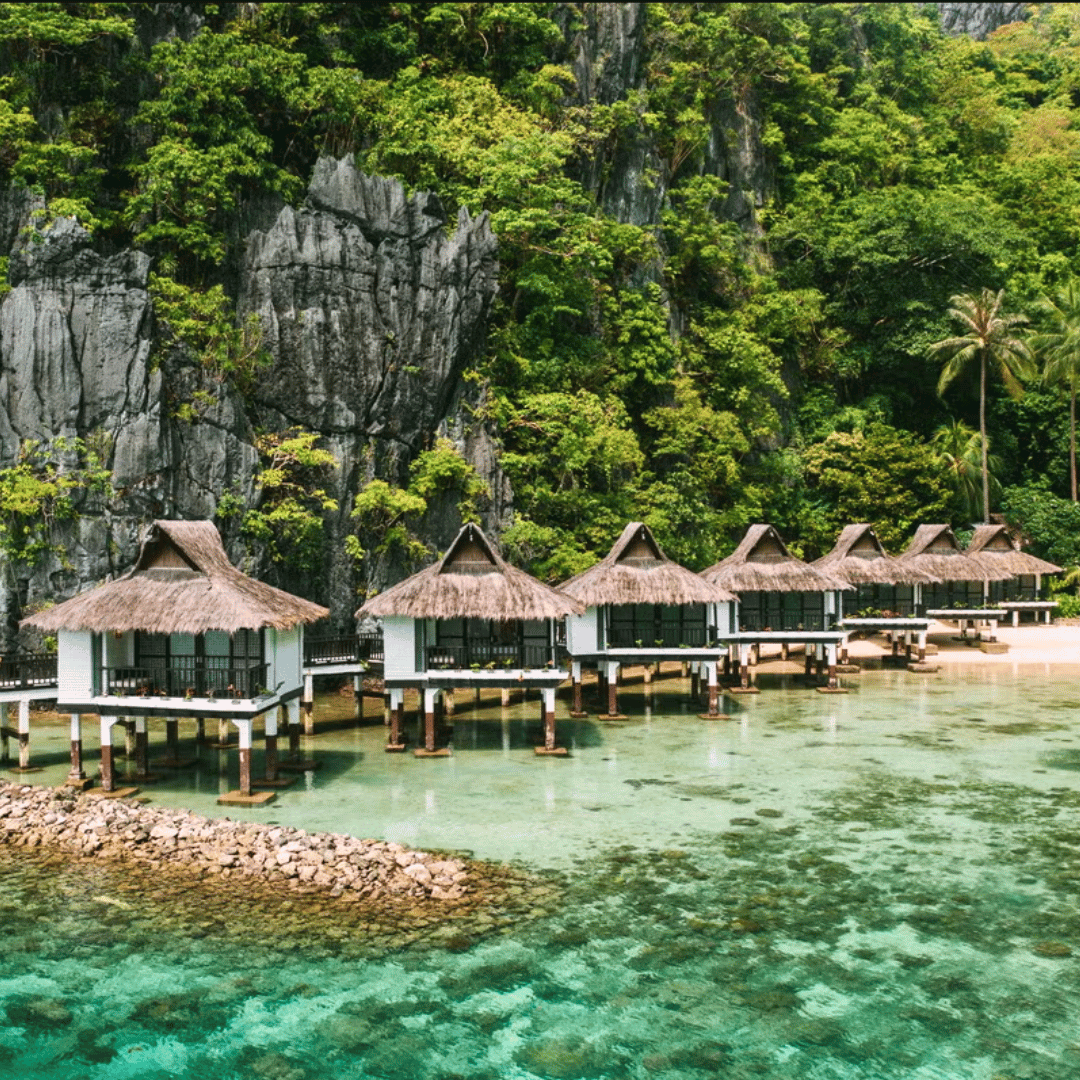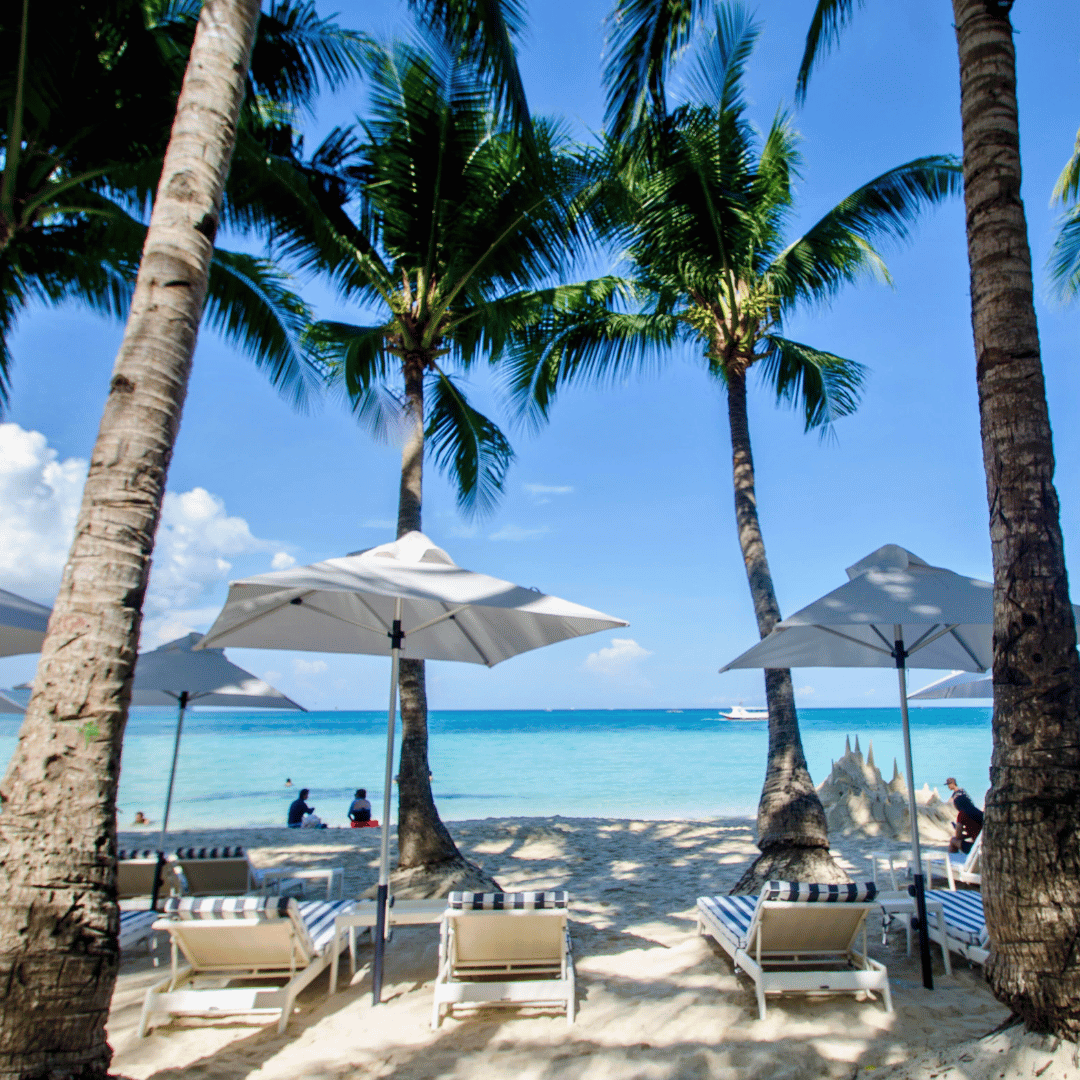
Philippines Private Tour Packages
Bespoke Itineraries Designed For Australian Travellers
The Philippines is a nation of emerald islands, layered history and vibrant traditions, where lush landscapes meet rich cultural heritage. In Manila, colonial architecture, bustling markets and modern galleries stand side by side, while Cebu and Iloilo echo with centuries of Spanish influence. Across Bohol and Palawan, travellers discover limestone cliffs, underground rivers, and coral reefs teeming with marine life. Inland, the rice terraces of Banaue showcase both ingenuity and beauty, carved into the mountains by generations of farmers. Island-hopping reveals hidden lagoons, quiet coves and stretches of white sand, while whale sharks, turtles and colourful fish appear on diving and snorkelling excursions.
Private tours of the Philippines can be crafted to your pace and passions, offering a mix of adventure, leisure and cultural encounters. This might mean exploring UNESCO sites, paddling through mangroves, visiting weaving villages or enjoying a sunset cruise. From city streets alive with festivals to islands where time slows, Philippines private tour packages provide a deeply rewarding way to experience this diverse and captivating country. At Asia Unbound, we design private journeys across Asia for Australian travellers seeking flexible, well planned experiences and genuine cultural connection.
Our Best Philippines Tour Itineraries
Philippines Travel Advice For First Time Visitors
-
The Philippines is an archipelago of more than 7,000 islands, which means journeys often involve flights, ferries, and private transfers. Domestic flights are frequent and reliable, but ferries can be affected by sea conditions, so it’s best to build some flexibility into travel plans.
Festivals are a vibrant part of life across the islands. From Sinulog in Cebu to Ati-Atihan in Kalibo, celebrations with music, parades, and dancing are common, and even outside of major events, travellers are likely to encounter local fiestas that add colour and energy to their experience.
Religion is central to daily life. Catholicism shapes much of the country’s culture, and towns often revolve around their local church and fiesta calendar. This heritage is visible in the architecture, historic churches, and religious traditions that set the Philippines apart from many Asian destinations.
Connectivity is good in cities and on major islands, with Wi-Fi available in hotels, restaurants, and airports. In rural areas, coverage can be patchy, so purchasing a local SIM card from Globe or Smart is recommended for smoother travel.
Cash remains important for everyday transactions, especially in smaller towns and remote islands. ATMs are common in cities, but less so in rural areas, so withdrawing in advance is practical. Credit cards are widely accepted in hotels and resorts, but not always for smaller shops or services.
Medical facilities vary greatly. Modern, private hospitals in Manila, Cebu, and Davao provide international standards of care with English-speaking staff, but options are limited in remote regions. Comprehensive travel insurance is strongly recommended, especially for island-hopping, diving, or adventure activities.
The Philippines is widely regarded as welcoming and friendly. Usual travel awareness is advised in crowded areas, and government advisories recommend avoiding certain parts of the far south. Travelling with a private operator helps ensure itineraries are well planned, safe, and stress-free.
-
The Philippines does not have states in the way countries like Australia or the USA do. Instead, the nation is divided into three main island groups - Luzon, Visayas, and Mindanao. These groupings are further divided into 17 regions and 82 provinces, but for travellers, the island groups are the easiest way to understand the country’s geography.
Luzon is the largest and most populous group, home to Manila, the capital, and many of the Philippines’ cultural and historical landmarks. The Cordillera region in northern Luzon features the UNESCO-listed rice terraces of Banaue and Batad, while Ilocos showcases colonial churches and coastal scenery. The Bicol region is known for Mayon Volcano, with its near-perfect cone, and Palawan, although administratively part of Luzon, feels like a world of its own with limestone cliffs, turquoise lagoons, and island-hopping around El Nido and Coron.
The Visayas sit at the heart of the archipelago and are often associated with tropical island escapes. Cebu offers Spanish heritage sites and nearby diving, while Bohol is famous for the Chocolate Hills, Loboc River, and tiny tarsiers. Negros blends sugarcane plantations with mountain scenery, and Panay is the gateway to Boracay, one of the world’s most celebrated beaches. Leyte and Samar, meanwhile, are rich in World War II history and rugged landscapes.
Mindanao, in the south, is the country’s second-largest island and known for its cultural diversity and natural beauty. Davao, a thriving urban centre, lies in the shadow of Mount Apo, the Philippines’ highest peak. Northern Mindanao offers waterfalls and adventure activities, while Siargao has gained global recognition as a surfing hub and laid-back island retreat. Other regions like Caraga and Soccsksargen highlight Mindanao’s blend of traditions, landscapes, and local hospitality.
For visitors, thinking of the Philippines in terms of these three broad island groups makes planning more straightforward:
- Luzon for culture, heritage, and mountains
- Visayas for islands, beaches, and diving
- Mindanao for adventure, surf, and diverse cultural encounters -
The Philippines is one of the most linguistically diverse countries in the world, with more than 170 languages spoken across its many islands.
The official national language is Filipino, which is based on Tagalog (a regional language) and widely used in Manila and across Luzon. Alongside Filipino, English is also an official language and is commonly spoken in education, government, business, and tourism, making travel smooth for visitors.
Regional languages remain very strong and are central to local identity. Cebuano (Bisaya) is spoken in much of the Visayas and parts of Mindanao, Ilocano is common in northern Luzon, Hiligaynon in western Visayas, and Waray in Samar and Leyte. Each island group and province has its own local tongue, and many Filipinos speak multiple languages fluently.
For travellers, English is widely understood in hotels, restaurants, airports, and with guides, while learning a few basic Filipino words such as salamat (thank you) or magandang araw (good day) is always appreciated.
-
The Philippines is a country that can be visited throughout the year, but the best time to travel often depends on the regions you plan to explore and the experiences you are seeking. With more than 7,000 islands spread across three main island groups, the country offers something in every season.
December to February is one of the most popular windows for international visitors. Conditions are generally clear and comfortable, making it an excellent time for cultural touring in Manila and northern Luzon, exploring the rice terraces of Banaue, and enjoying Boracay’s beaches. Cities such as Cebu and Iloilo also host major festivals, giving travellers a chance to experience parades, music, and street dancing.
March to May is the classic season for island-hopping and beach holidays. Palawan, Bohol, and Cebu are at their most appealing, with turquoise waters perfect for snorkelling, diving, and kayaking. This is also the time of Holy Week, the Philippines’ most significant religious holiday, when processions and celebrations bring towns and cities to life.
June to August sees fewer international travellers, making it a good time for those who prefer quieter destinations. The countryside is lush and green, ideal for photography, and diving conditions in many protected marine areas remain excellent. This period is also when you can experience a more local side of the Philippines, with fewer crowds in popular spots.
September to November brings a mix of opportunities. Cultural events like the Kadayawan Festival in Davao and the MassKara Festival in Bacolod showcase regional pride and colour. This is also the peak season for surfing in Siargao, which attracts enthusiasts from around the world. Highlands such as Sagada and Banaue are particularly appealing at this time, offering cooler air and scenic treks.
In short, December to May is generally considered the best time for first-time visitors, thanks to reliable travel conditions and excellent opportunities for beaches, island-hopping, and cultural touring. However, travellers who come between June and November are rewarded with greener landscapes, vibrant festivals, and quieter experiences, which can make for a more personal and immersive journey.
-
The Philippines is a relaxed tropical destination and most travellers find that lightweight breathable clothing is best for day to day comfort. Cotton, linen or quick dry fabrics work well in the country’s warm climate. In cities such as Manila, Cebu or Davao, casual wear is the norm with light shirts, trousers, skirts and dresses all appropriate, and comfortable shoes useful for exploring heritage districts, markets and museums. Because air conditioning can be very strong in hotels, restaurants and shopping centres, a light jacket, cardigan or scarf is worth carrying.
On the islands, whether you are visiting Palawan, Boracay, Bohol or Siargao, beachwear is common, but swimsuits are best kept to the shoreline, pools or resorts. When moving around towns or dining in restaurants, a simple cover up, sarong or T shirt with shorts makes the transition easy. Footwear can make a big difference. Flip flops and sandals work well for the beach, but sturdier water shoes or trainers are more practical for boat tours, caving or exploring rocky coastal trails.
In the highlands of Luzon such as Banaue, Sagada or Baguio, the evenings can be surprisingly cool. Temperatures often drop at night, so packing a jumper or jacket ensures you are comfortable after dark. Hikers and trekkers will also appreciate layering options, especially if spending time in the Cordillera mountains.
When visiting religious sites such as historic churches or shrines, it is respectful to dress a little more conservatively by covering shoulders and knees. These landmarks remain active places of worship, so visitors who carry a light scarf or shawl to cover up are always appreciated.
For outdoor adventures, from river cruises in Bohol to jungle walks in Palawan or snorkelling trips in Coron, quick dry clothing, sun hats and long sleeved tops are practical. These protect against both strong sun and occasional insects. A small daypack is also handy for carrying essentials like a water bottle, sunscreen and an extra layer.
Overall, dressing in the Philippines is casual and informal. Locals are used to a mix of styles and comfort is prioritised over formality. A good approach is to bring versatile clothing that suits both urban exploring and outdoor activities, with a few smarter outfits if you plan to dine at upscale restaurants or stay in luxury resorts.
-
Food in the Philippines is a reflection of its diverse history and island culture, blending indigenous traditions with Spanish, Chinese and Malay influences. Meals are often shared, and travellers will quickly discover that dining is as much about community as it is about flavour.
A classic staple is adobo, a slow cooked dish of meat or seafood simmered in vinegar, soy sauce, garlic and spices. Another favourite is sinigang, a sour tamarind based soup that comes with vegetables and either pork, fish or shrimp. Lechon, a whole roasted pig with crispy skin, is a festive centrepiece often served at celebrations.
Street food is part of daily life, especially in cities. Skewers of grilled meat known as inasal, fried snacks like lumpia (spring rolls), and sweet treats such as halo halo (shaved ice with fruit, jellies and milk) are popular choices. Fresh seafood is abundant across the islands, from grilled fish in coastal villages to oysters and crabs in local markets.
Regional specialities give each island its own flavour. Bicol is famous for spicy dishes with coconut milk, Cebu for lechon, Pampanga for rich stews, and Iloilo for hearty noodle soups. In the Visayas, you will find kinilaw, a type of ceviche marinated in vinegar, while Mindanao offers dishes that draw on Malay and Muslim heritage, such as satti (grilled meat with spicy sauce).
For travellers, sampling food in the Philippines is about variety and discovery. From rustic roadside stalls to vibrant markets and beach barbecues, every meal tells a story of the country’s history, creativity and hospitality.
-
The Philippines is a vast archipelago of more than 7,000 islands, so the amount of time you need depends on how deep you want to go and how much variety you want to include. A short visit offers a taste of the country’s highlights, while a longer trip allows you to explore its rich culture, dramatic landscapes and tropical coasts at a more relaxed pace.
A short stay of 5 to 7 days is enough to combine Manila with one island destination. In Manila you can tour Intramuros, Rizal Park and Chinatown before flying to Boracay for white sand beaches, or to Palawan for the lagoons of El Nido and Coron. This approach gives a contrast between city heritage and island leisure, making it a good choice for first-time visitors or those with limited time.
With 10 to 14 days, you can see more variety without rushing. A typical itinerary might begin with the rice terraces of Banaue and Sagada in northern Luzon, followed by a few days in Bohol to see the Chocolate Hills and tarsiers, then finish with Palawan’s dramatic limestone cliffs and snorkelling opportunities. Another option is to combine Cebu and Siquijor in the Visayas with El Nido, adding both adventure and beach relaxation. This timeframe is ideal for travellers who want to balance culture, nature and island experiences in one seamless trip.
A longer journey of 2 to 3 weeks gives you time to uncover the Philippines’ extraordinary diversity. You might connect the colonial streets of Vigan, the mountain villages of Sagada and the beaches of Bohol with wildlife encounters in Donsol or whale shark watching in Oslob. Palawan can be explored in more depth, from Puerto Princesa and Sabang to El Nido and Coron. For the more adventurous, Mindanao adds world-class surfing in Siargao, Mount Apo near Davao and cultural encounters in the south. Extended itineraries also allow time for rest days, which are important given the country’s spread of flights and ferries between islands.
In summary, the Philippines can be enjoyed in as little as a week, but a two to three week trip gives the most rewarding balance of culture, coast and countryside. Each additional day offers new opportunities, whether that is discovering a remote fishing village, joining a colourful local fiesta, or taking an extra island-hopping cruise in crystal clear waters.
-
Yes, it is very easy to combine a private tour of the Philippines with another country, and three of the best options are Borneo, Vietnam, and Cambodia. Each offers a distinct experience that complements the islands of the Philippines, creating a varied and rewarding journey.
Borneo pairs beautifully with Palawan or Cebu. After snorkelling coral reefs and cruising lagoons in the Philippines, travellers can cross to Malaysian Borneo for orangutan sanctuaries, proboscis monkeys, and river safaris in Kinabatangan. The contrast between tropical islands and lush rainforests makes for a unique two-country adventure.
Vietnam works well with Manila and the Visayas. Travellers can experience Hanoi’s Old Quarter, the karst towers of Ha Long Bay, or the lantern-lit streets of Hoi An before flying to the Philippines for beach time in Boracay or El Nido. This combination blends culture, heritage, and coastal relaxation.
Cambodia offers a strong cultural pairing. Many itineraries link the temples of Angkor Wat with the lagoons of Palawan or the rice terraces of Banaue, giving travellers a journey that connects ancient heritage with natural wonder.
Coordinating multi-country travel can be complex, with separate flights, transfers, and guides to arrange. Asia Unbound takes care of every detail, ensuring a seamless itinerary across borders. With local experts in each country, private guides, and carefully selected hotels, Asia Unbound designs journeys that balance comfort with discovery. This approach makes combining the Philippines with Borneo, Vietnam, or Cambodia not only stress free but also deeply enriching.
Popular Places To Visit In The Philippines
Plan Your Philippines Itinerary With Asia Unbound
Established in 2007, Unbound Travel Group is a collection of tourism brands specialising in highly curated private touring and small group journeys throughout Asia. With more than two decades of experience, we create bespoke itineraries for discerning travellers looking for a real adventure. Based in Australia, our team uses our on-the-ground experience and first-hand knowledge to carefully curate experiences that are innovative and authentic.
When you start to research a trip to Asia, it’s easy to feel overwhelmed by the seemingly endless possibilities, especially if you don’t want to join a group tour. At Asia Unbound, we’ve made this process easy. We simply need you to tell us relevant information about yourself and the type of travel experience you are looking for - whether it’s a wish list of places you want to visit, a style of travel, a particular interest or theme that you want to explore, or all of these factors. Using this information, we curate a custom-made Asia private tour just for you. It’s that simple.
Philippines Hotel Recommendations



















